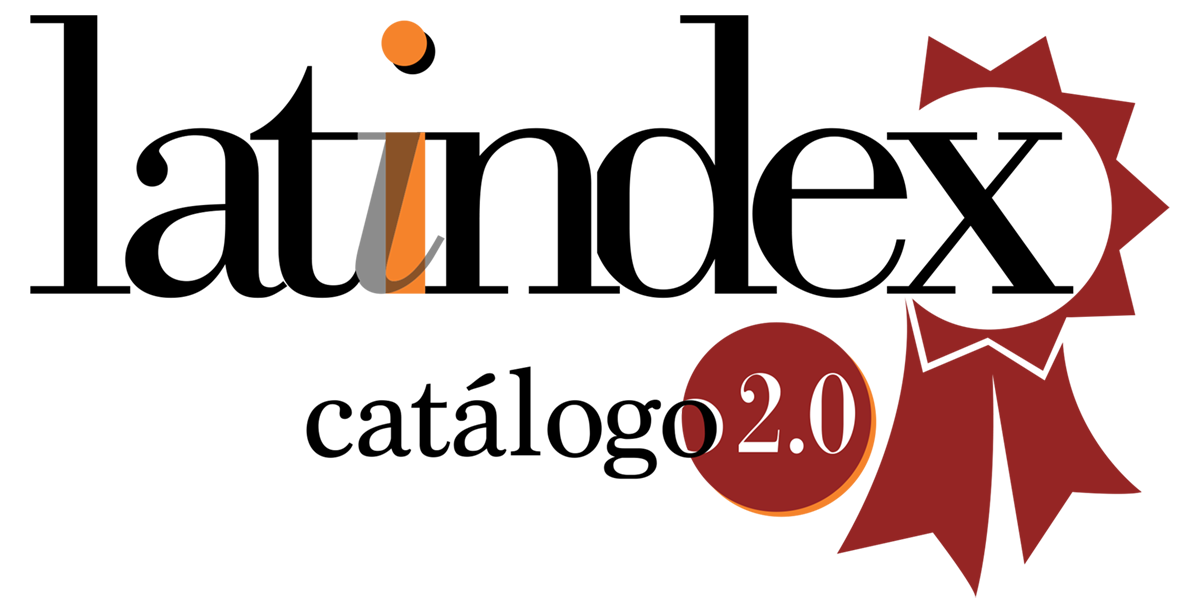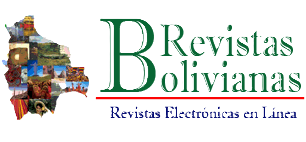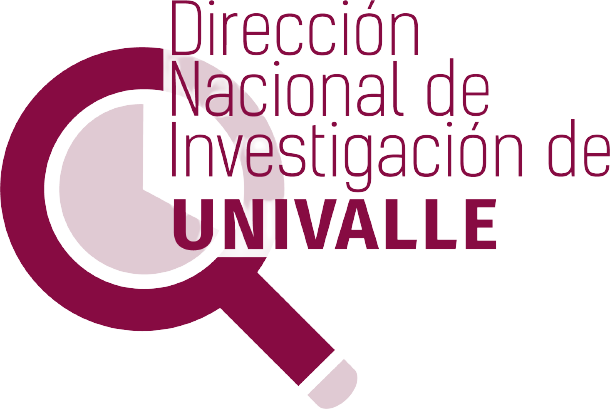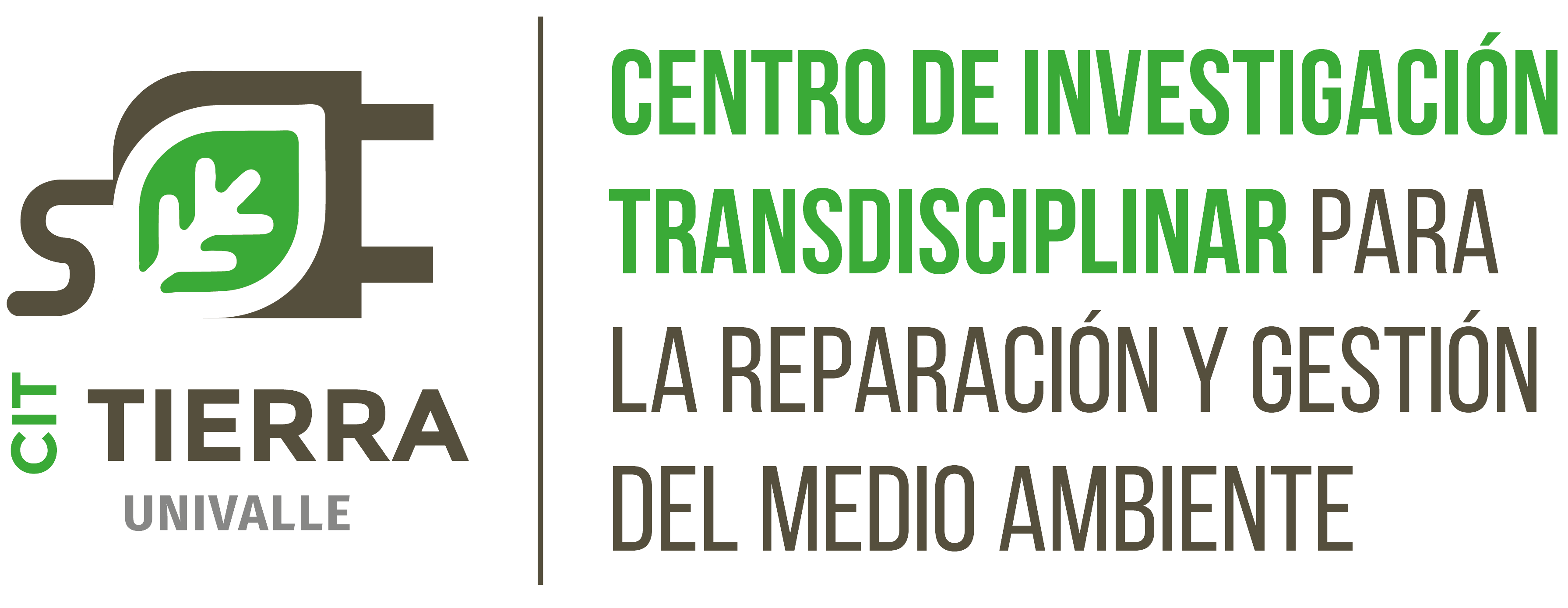Urban Parks with Social Inclusion Metropolitan Area of Cochabamba
DOI:
https://doi.org/10.52428/20758944.v13i40.647Keywords:
Social inclusion, Urban therapy, Urban acupuncture, Habitability, Restoring environment, Quality of lifeAbstract
This review aims to analyze the importance of open space (squares, parks and green areas) called spaces of urban therapy with social inclusion, presenting a conceptual bibliographical review about urban acupuncture, habitability in the open space and the restoring environment, allowing to perform a diagnose and offer recommendations for designs with social inclusion for users of the Cochabamba metropolitan area, with the objective to improve the design in these spaces and to benefit ali social groups in the city, so that they have a better quality of life, wellbeing and an adequate appropriation of the urban space.
Downloads
References
FLORES, X. R. & GONZALES-GUILLÉN. M.J. Consideraciones sociales en el diseño y planificación de parques urbanos. Economía, Sociedad y Territorio. 2007. 6(4): 913 - 951.
CENTRAL, R. {2017). Inauguración del primer parque inclusivo en la ciudad de Cocha bamba. Los tiempos. Consultado el 9 de agosto de 2017: http://www.lostiempos.com/actualidad/local/20170202/abren-primer-parque-inclusivo
PROGRAMA DE LAS NACIONES UNIDAS PARA EL MEDIO AMBIENTE {PNUMA). XIV Reunión del Foro de Ministros de Medio Ambiente de América Latina y el Caribe. Panamá. UNEP/LAC-IGWG.XIV/lnf.11. 2003. On line: http://www.pnuma.org/forodemi nistros/14-panama/panllnfe-l ndicadoresAm bientales.pdf (Agosto de 2017).
CARRIÓN, F. El centro histórico como proyecto y objeto de deseo. EURE (Santiago). 2005. 31(93): 89 -100. https://doi.org/10.4067/S0250-71612005009300006
[S] LA VANGUARDIA. Las 8 ciudades más verdes de Europa. 2017. On line: http://www.lavanguardia.com/vivo/ecologia/20161124/412133435994/ciudades-europa-verdes-ecologia-sostenible.html (Consultado: 8 de agoste de 2017)
VELOZ, J. Acupuntura Urbana. 2012. On line: http://transeunte.org/articulos/acupuntura-urbana/ {Consultado el 9 de agosto de 2017)
MIRANDA, S.C. Psicología ambiental &Arquitectura Hospitalaria: Diseño de ambientes restauradores enfocados al paciente geriátrico. Tesis de Maestría en Arquitectura. Universidad Nacional Autónoma de México (UNAM); 2014.
HARTIG, T. Guest editor's introduction. Environment and Behavior. 2001; 33(4): 475 - 479. https://doi.org/10.1177/00139160121973098
VAN DEN BERG, A. HARTIG, T. & STAATS, H. Preference for nature in urbanized societies: Stress, restoration, and the pursuit of sustainability. Journal of Social lssues. 2007; 63(1): 79 - 96. https://doi.org/10.1111/j.1540-4560.2007.00497.x
KAPLAN, S. & TALBOT, J. Psychological benefits of a wilderness experience. En l. Altman y J. F. Wohlwill (Eds.), Behavior and the natural environment. Nueva York: Plenum Press. 1983. https://doi.org/10.1007/978-1-4613-3539-9_6
KAPLAN, R. & KAPLAN, S. The experience of nature: A psychological perspective. Nueva York: Cambridge University Press. 1989.
ULRICH, R. Aesthetic and affective response to natural environment. En l. Altman y J.F. Wohlwill, (Eds.), H u m a n behavior and Environment: Advances in theory and research. Nueva York: Plenum Press. 1983. https://doi.org/10.1007/978-1-4613-3539-9_4
KORPELA, K. & HARTIG, T. Restorative qualities of favorite places. J o u rn a l of Environmental Psychology. 1996. 16(3): 2 2 1 - 233. https://doi.org/10.1006/jevp.1996.0018
REVOLLO, M. Hay 5.080 personas en Registro de Discapacidad de Cocha bamba. Opinión. 2011. On line: http://opinion.com.bo/opinion/informe_especial/20ll/l226/suplementos.php?id=2l48 (Consultado el 10 de agosto de 2017)
PARK, D., RADFORD, J. & VICKERS, M. Disability Studies in H u m a n Geography. Progress in H u m a n Geography. 1998; 22(2): 20
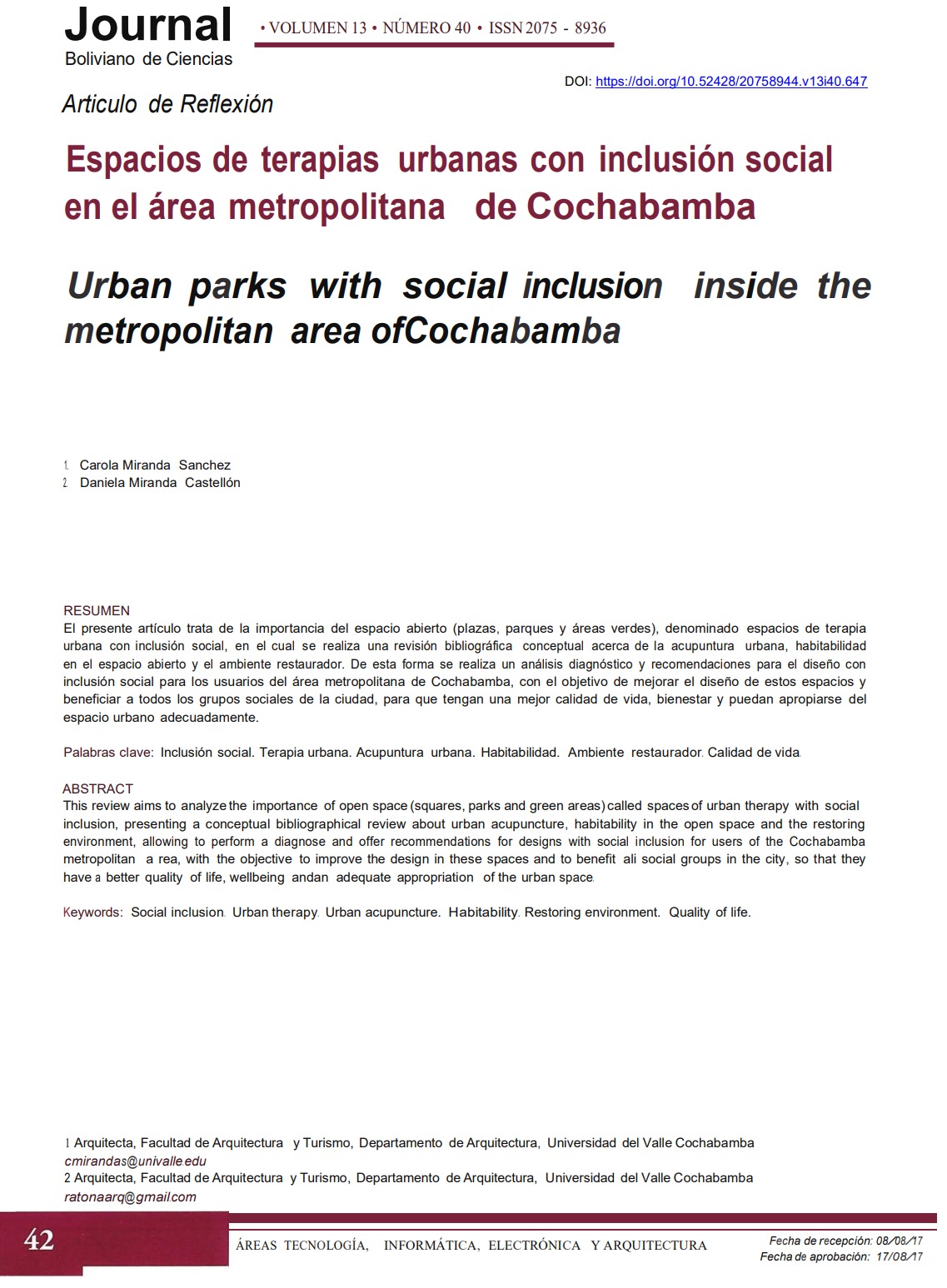
Downloads
Published
How to Cite
Issue
Section
License
Copyright (c) 2017 Carola Miranda Sanchez y Daniela Miranda Castellón

This work is licensed under a Creative Commons Attribution 4.0 International License.
Authors who publish with this journal agree to the following terms:
- Authors retain copyright and grant the journal right of first publication with the work simultaneously licensed under a Creative Commons Attribution License 4.0 that allows others to share the work with an acknowledgement of the work's authorship and initial publication in this journal.
- Authors are able to enter into separate, additional contractual arrangements for the non-exclusive distribution of the journal's published version of the work (e.g., post it to an institutional repository or publish it in a book), with an acknowledgement of its initial publication in this journal.
- Authors are permitted and encouraged to post their work online (e.g., in institutional repositories or on their website) prior to and during the submission process, as it can lead to productive exchanges, as well as earlier and greater citation of published work.





